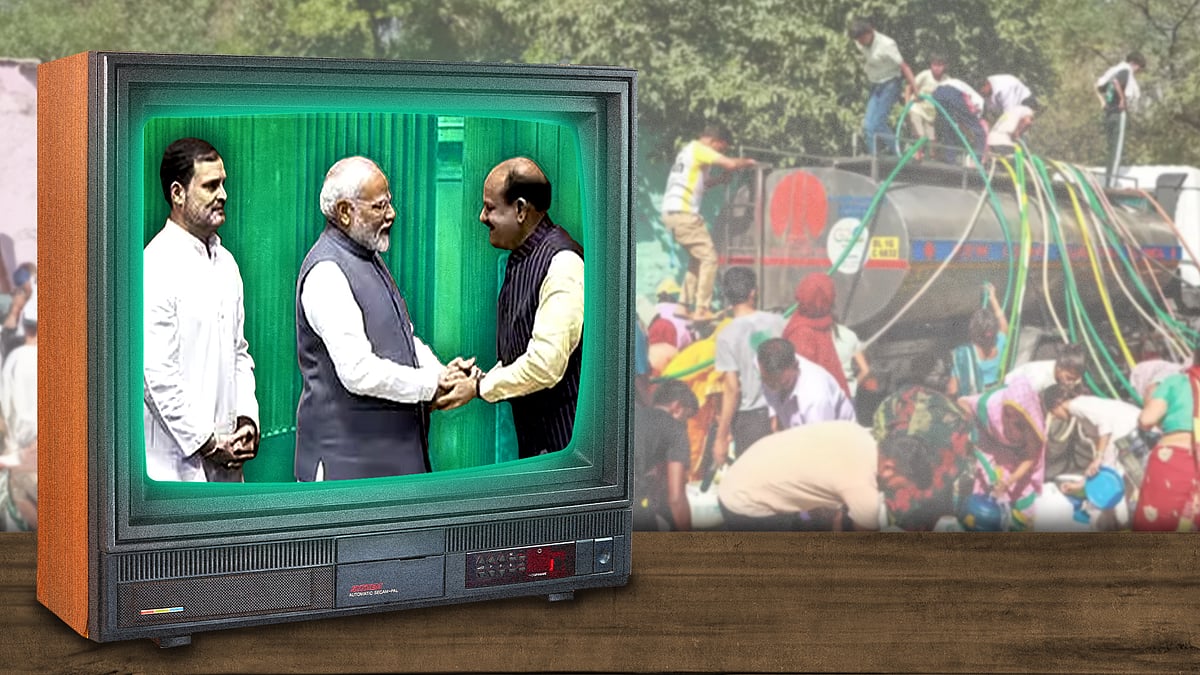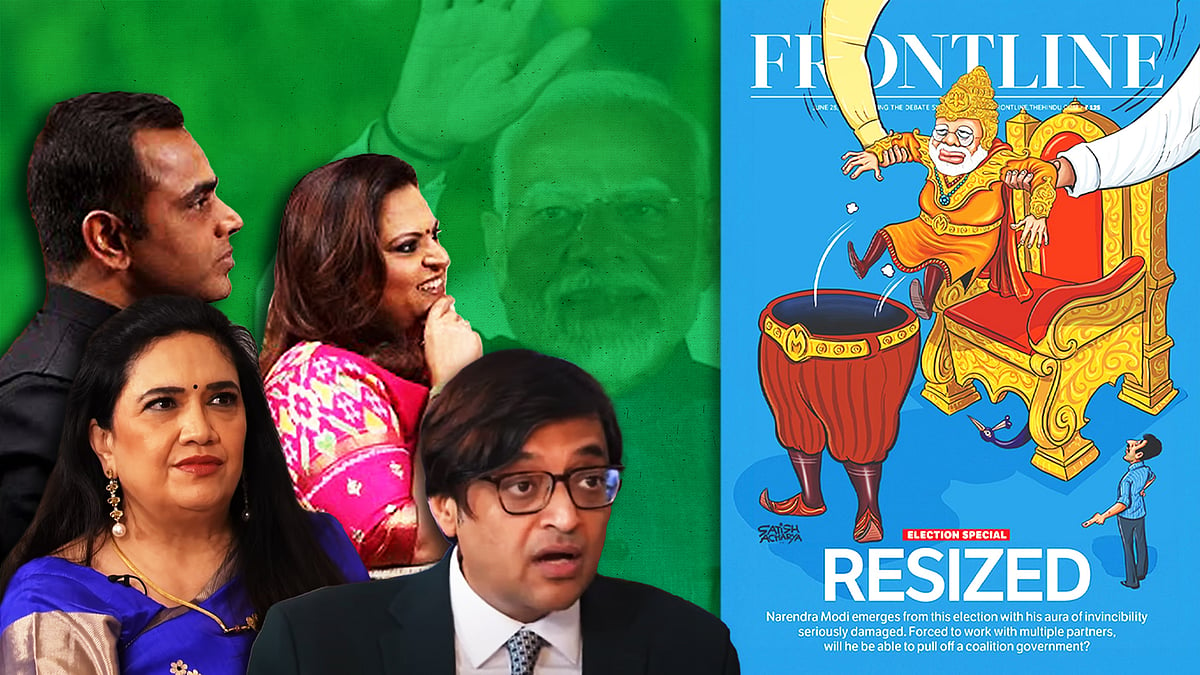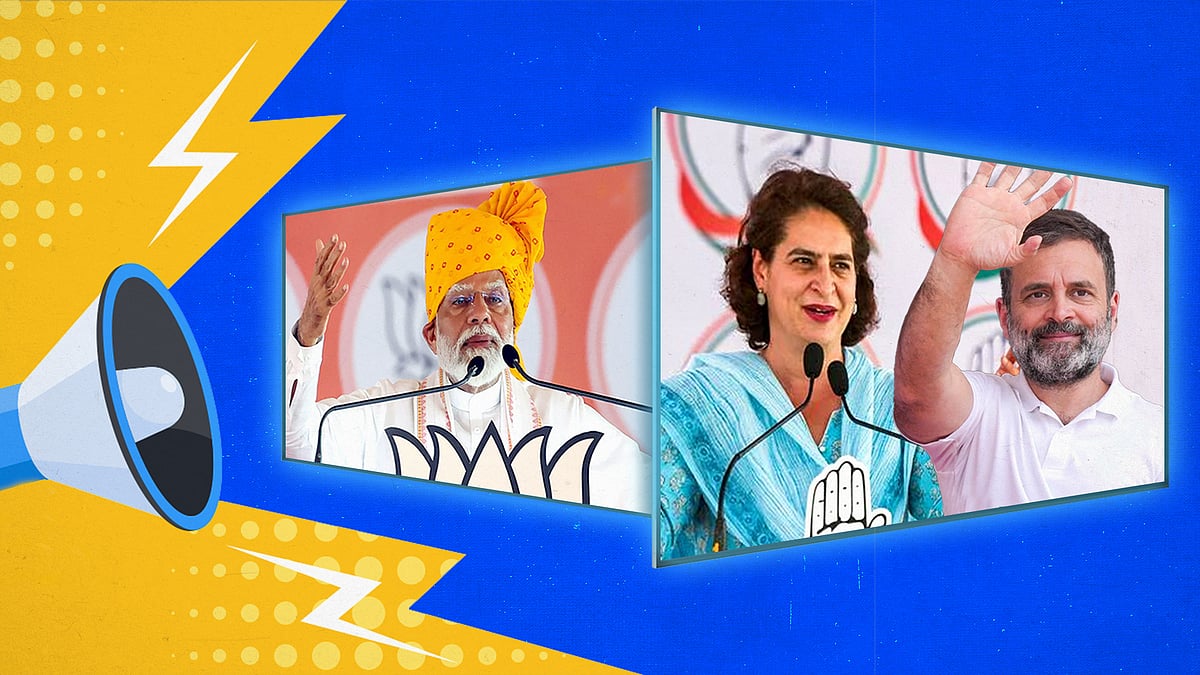In ‘robust vs rowdy opposition’ binary, Big Media blanks out parliamentary traditions
The Manipur story doesn’t begin and end with statements in parliament or slogans by the opposition.
Who would have thought that a session of the Lok Sabha would draw eyeballs the way the first session of the 18th Lok Sabha has?
Since it adjourned, it has been discussed and analysed in a way we haven’t seen in any other session of parliament in recent times. The reason is obvious. There are other voices that are heard, not just those of people on the Treasury benches. And some of these, especially the first-timers, are making a mark.
For the media – which is used to turning everything into the equivalent of the Big Fight, such as the programme that was once aired on NDTV – the focus has largely been on what the newly-minted Leader of the Opposition, Rahul Gandhi, said in his 100-minute speech that was marked by many interruptions. And Prime Minister Narendra Modi’s two-hour-long speech, which was not interrupted although opposition members shouted slogans such as “Justice for Manipur” while he spoke. In those two hours, Modi did not mention Manipur even once.
The media sat in judgement to decide who did better, Rahul Gandhi or Narendra Modi, as if that was the burning issue of the day. Also discussed was whether it was appropriate for the opposition to shout slogans when the PM was speaking or stage a walkout as it did in the Rajya Sabha during his address. The fact that this has been done before, including by the BJP when it was in opposition, was not emphasised.
Rononjoy Sen, a former journalist who is with the National University of Singapore, reminds us in an op-ed in the Hindustan Times that the BJP had disrupted parliament using precisely these tactics in 2010-11 during the 2G scam row. In fact, Sen quotes Atal Bihar Vajpayee as saying that the “most effective way to oppose someone is a walkout” and that, in his view, this ought to be seen as the “highest form of opposition or antagonism”.
Sen concludes: “A popular news channel recently made a distinction between a robust and a rowdy opposition. That’s a false dichotomy. The opposition can be both as long as it does not stall parliament. In a noisy and cacophonous democracy, such as India, it is unrealistic to expect otherwise.”
The day before Modi spoke, Manipur was mentioned, not just by Rahul Gandhi but more eloquently by the MP from Inner Manipur, professor Bimol Akoijam, a first-timer. Speaking close to midnight to an almost empty House, Akoijam’s words need to be heeded. I doubt if too many people were still watching the live telecast on Sansad TV when he spoke, but what he said was noted by several newspapers, and his entire speech was widely-circulated on social media.
According to The Hindu, Akoijam said, “The hurt, the anger has thrown a nobody like me to be part of this temple of democracy, beating the BJP cabinet minister. Think about the pain. I will keep quiet the moment the Prime Minister opens his mouth, and the nationalist party says that Manipur is a part of India and we care for the people of that state.”
While I doubt that the Prime Minister heard Akoijam, the next day in the Rajya Sabha, he did mention Manipur. In another long speech, he devoted five minutes to Manipur. Yes, five minutes after maintaining silence for almost 15 months.
This momentary mention made front-page news in most national newspapers the next day. But there was little by way of a critique of what he said in those five minutes, most of which was devoted, as usual, to criticising the Congress and placing the blame for what has happened in Manipur on the past. There was not a hint of acknowledgement that perhaps his government at the centre, and his party’s government in the state had fallen short.
Only The Hindu, in a strong editorial, called him out and pointed out that “Manipur, unlike what Mr Modi asserts, is not any close to normalcy.” It emphasised that “bluster and mere acknowledgment of the crisis will not solve the problems in Manipur and Mr Modi has to become proactive in leading changes that will lead to peace and reconciliation.”
As for others, the Indian Express waited until Rahul Gandhi visited Manipur on July 8 and met the displaced from both sides of the divide to comment. Compared to the editorial in The Hindu, the Indian Express editorial was muted in its criticism of Modi’s government. Instead of pointing out the centre’s role in allowing the situation in Manipur to deteriorate as it has, the paper praised Modi and wrote: “In his RS speech, the PM rightly spoke of the necessity to ‘go beyond politics and bring peace and stability’ to the state.” It is inexplicable that the media cannot see the politics that the BJP, at the centre and in the state, has played in allowing the crisis to fester.
The Manipur story doesn’t begin and end with statements made in parliament or slogans shouted by the opposition. As Akoijam eloquently stated, “The silence on the Manipur tragedy is not unique, it reflects this general continuity of colonialism. A national party like BJP will be comfortable with the silence on Manipur... If you hear the anxiety and pain in my voice, please go back and see the 60,000 people languishing in relief camps, don’t talk about Partition Remembrance Day till then.” He was reflecting on the reality of his state, which is now divided to the point where it appears inconceivable that it can be put together again.
The other story that could be drowned out, literally, by all the shenanigans that we have yet to see in the forthcoming budget session of parliament is the appalling state of India’s infrastructure.
In the state of Bihar, more than a dozen bridges collapsed within a fortnight. How could this happen? Will anyone be held accountable?
Hindustan Times followed up with this story that tells us about the pathetic situation in the state, where a maintenance policy is formulated after a bridge collapse rather than after it is built.
Apart from the bridges in Bihar, in the last month, there have been multiple reports about airports where roofs have collapsed or where there are serious leaks. In Delhi, the national capital, Terminal 1 had to be shut down because the roof over the driveway collapsed, killing a taxi driver and injuring others. The same thing happened at a new airport in Rajkot. And Lucknow, Guwahati, and the north Goa airport also reported leakages. Why is this happening, especially in newly-built or refurbished airports? Who is responsible?
I am waiting to be proved wrong, but I doubt if this story will be pursued as assiduously as the one of the collapsing bridges in Bihar. Many airports are run by Adani companies. Who will dare to bell that cat?
Complaining about the media is easy. Why not do something to make it better? Support independent media and subscribe to Newslaundry today.
 From health emergency to parliament, little changes for the media under new govt
From health emergency to parliament, little changes for the media under new govt Ownership, money, Modi 3.0 uncertainty: A sobering reality check for election cheer
Ownership, money, Modi 3.0 uncertainty: A sobering reality check for election cheer Battle of media tactics: Modi’s media blitzkrieg vs Congress’s snub
Battle of media tactics: Modi’s media blitzkrieg vs Congress’s snub.jpg?auto=format%2Ccompress&fit=max&dpr=1.0)